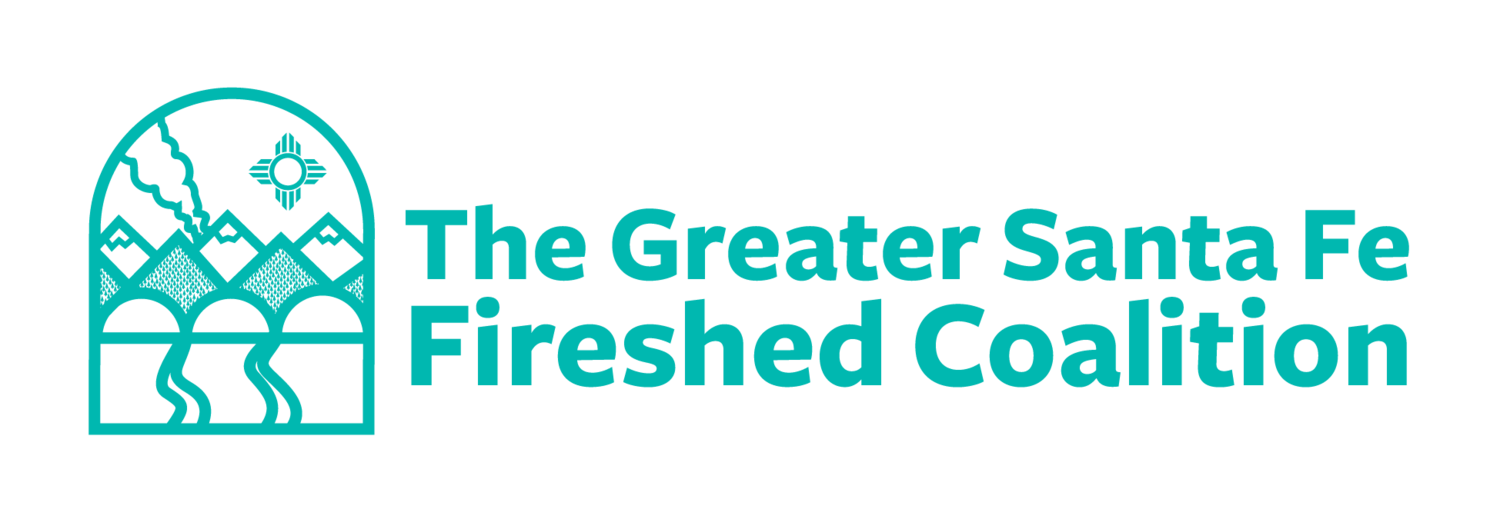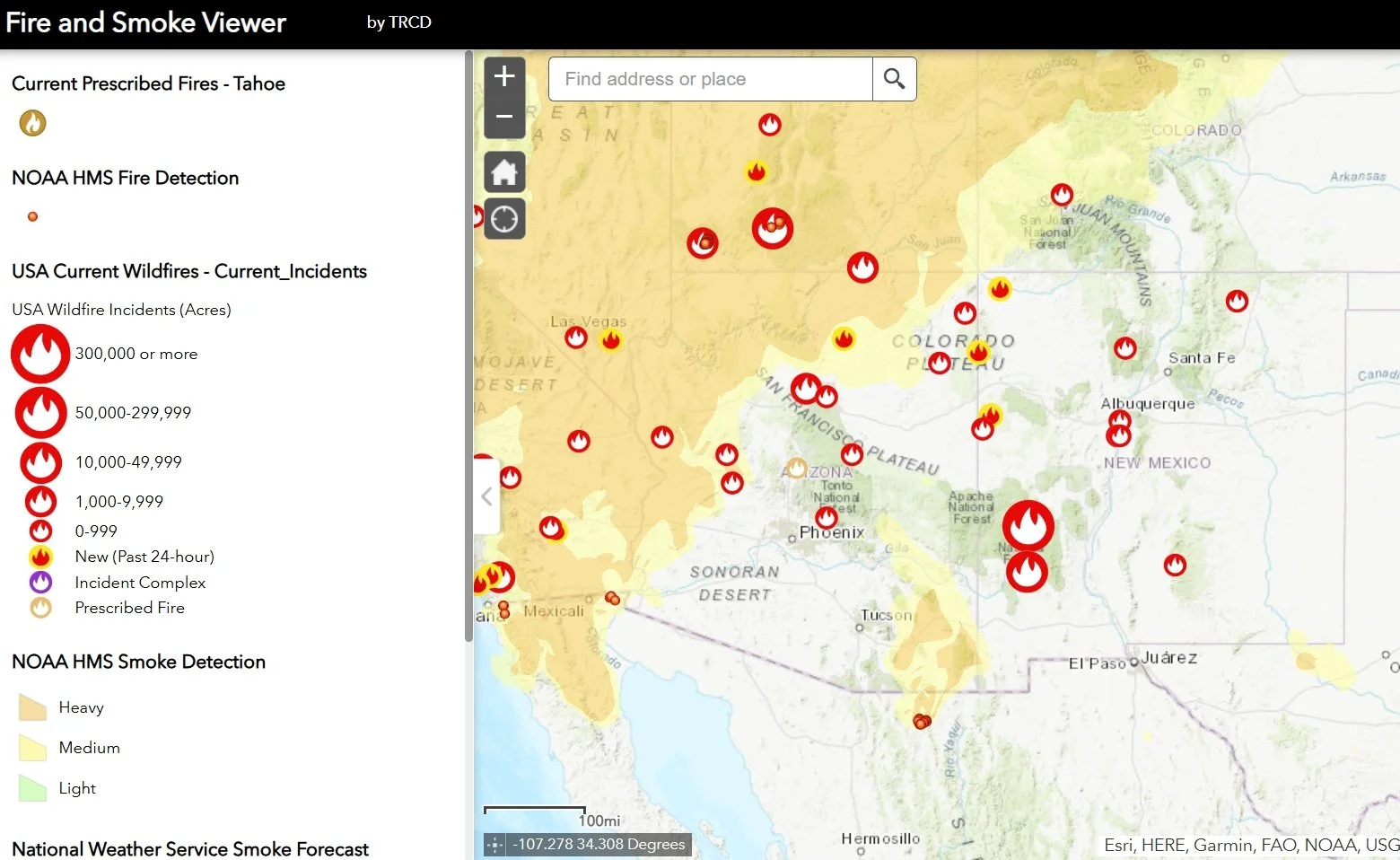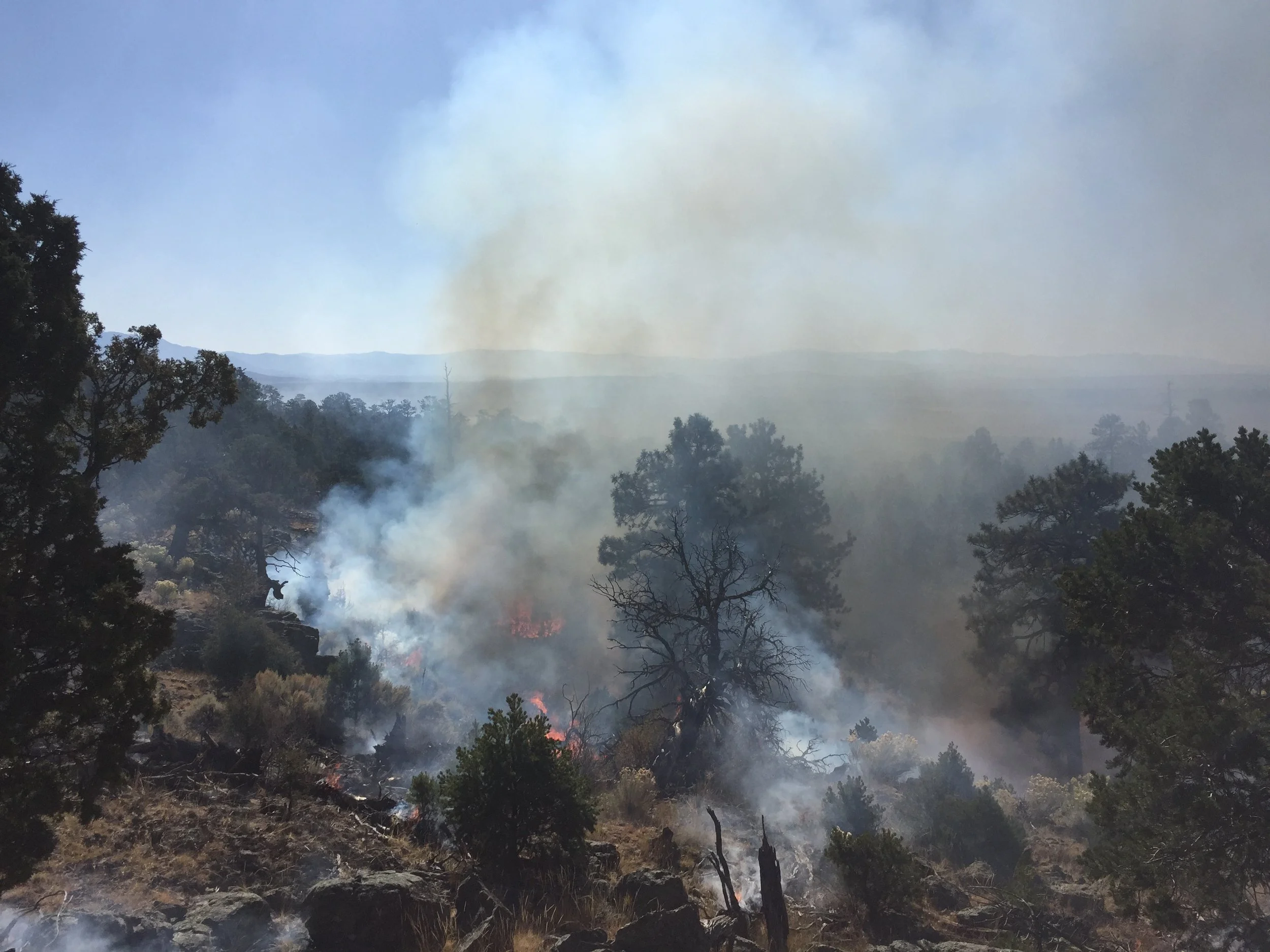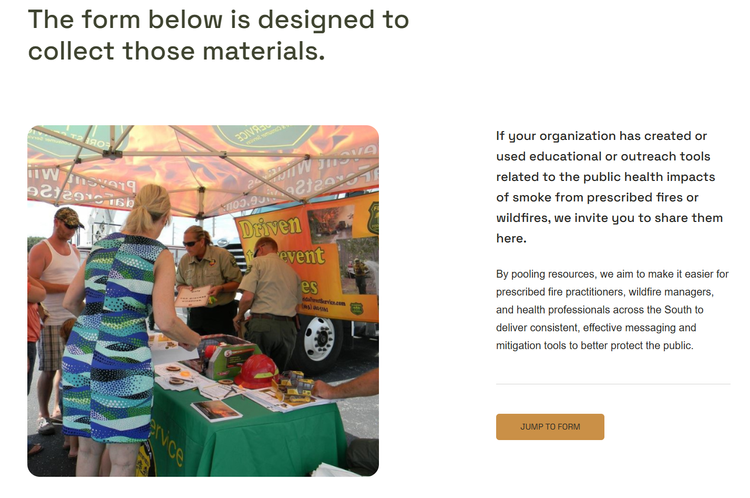Happy Wednesday GSFFC blog readers!
June 9-15 marked Smoke Ready Week for folks in Washington and Oregon; this annual awareness campaign, while based in the Pacific Northwest, is applicable to everyone residing in smoke-vulnerable places, including the Southwest. Smoke is a known health hazard and our air can become unhealthy to breathe because of smoke from wildfires close by or thousands of miles away. Smoke especially affects sensitive groups such as people under the age of 18 and over the age of 65, pregnant women, and people who are predisposed to respiratory ailments. In contrast to prescribed fires, which usually only burn vegetation, the composition of wildfire smoke can include particulate matter from burned homes, vehicles and hazardous materials. This week we are focusing on air quality, smoke impacts, and how we can make our families and our communities better prepared and safer during times of poor or hazardous air.
This Wildfire Wednesday features:
Smoke Ready Resources
How to clean your indoor air - DIY and commercial filter options and research
How to be prepared for smoke exposure - UNR Living with Smoke fact sheet
Help build a library of resources - submit your smoke and education materials now!
Smoke Ready Resources
ArcGIS Fire and Smoke Viewer
This map, provided by Tahoe Resource Conservation District, includes current smoke, current air quality, satellite detected fires from MODI and VIIRS satellites, and fire locations (as a point, updated as soon as possible).
How to Clean Your Air
Research and resources on air filtration options
The Washington State Department of Health offers a robust webpage on wildfire smoke education and actions. They recommend three options for improving air quality in the home:
If you have a heating, ventilation, and/or air conditioning (HVAC) system, use a filter rated for particle removal. This will reduce fine particles from wildfire smoke throughout your home.
HEPA portable air cleaners can improve indoor air quality by removing particles from smoke in a single room or designated space. HEPA air cleaners that include carbon filters can also remove some harmful gases from indoor air.
Making your own box fan filter (also called a DIY box fan filter) can be a less costly option to filter air and improve indoor air quality in a single room or designated space.
Air filtration systems, such as home HEPA Filters and Electrostatic Filters for HVAC, can drastically improve indoor air quality during times of poor environmental air conditions. These simple technologies are especially important for at-risk groups who may experience more severe symptoms and consequences from breathing polluted air; however, commercial options can be cost-prohibitive and out of reach, especially in rural areas. DIY (Do-It-Yourself, or homemade) air filters may be a more readily available and cheaper option for homes and schools.
In 2023, the National Collaborating Centre for Environmental Health published a meta-analysis on the efficacy, cost, and operation of DIY air cleaners. Their review showed that DIY air cleaners performed similarly to commercial portable air cleaners in terms of clean air delivery rate (CADR) and energy efficiency but were much more cost efficient that commercially available air cleaners. However, they also found that CADR can vary substantially depending on material quality and how well the DIY filters are constructed.
The group reviewed publications that tested the effectiveness of five models of DIY filter that all used box fans and sheet filters:
Although the metric of CADR varied between studies, the meta-analysis showed that DIY air filtration systems perform as well as, or better than, commercial systems across the board. The size of the space being filtered and tolerable speed of the fan (e.g. classrooms ran the fans on the lowest setting to reduce noise) both influence the efficacy of the filtration systems.
This research came with two important caveats:
DIY air cleaners made with newer model fans are unlikely to pose a fire or burn risk, but should be kept clear of obstructions and operated with common sense precautions. The filters should be changed when soiled; duration of filter lifespan will vary with use and conditions.
Portable air cleaners are only part of a comprehensive indoor air quality strategy. They do not replace the need for ventilation and should be used in conjunction with other appropriate health protective measures.
Finally, the study indicates that these three things can improve the effectiveness and safety of your DIY filter:
Seal the gaps. DIY air cleaner resources typically recommend sealing the gaps between fans and filters with a strong, wide tape such as masking tape or duct tape.
Use a cardboard fan “shroud.” A shroud on the fan’s outward face prevents the air expelled from the inner part of the fan from being re-entrained and pulled back in through the corners of the fan box where the blades do not reach.
Use a newer fan (2012 or newer) to minimize risk of burns and fire.
How to be Prepared for Smoke Exposure
The University of Nevada, Reno Extension’s Living With Fire Program has developed a fact sheet titled Living with Smoke: How to Be Prepared for Smoke Exposure. This resource explains what wildfire smoke contains, why it poses health risks, and offers practical guidance on how to protect yourself, especially when staying indoors isn’t an option.
If you cannot remain indoors during smoky conditions, the following tips will help reduce your exposure and health impacts:
Stay hydrated. Adequate hydration keeps your airway lubricated, which keeps you safer from health impacts related to smoke.
Use NIOSH N95 or P100 respirators if you must be outside. Cloth, surgical or dust masks will not protect against ozone or particulate matter
If possible, reduce strenuous activities, and take frequent breaks indoors to limit the amount of smoke inhaled.
To reduce the amount of smoke while driving in a vehicle, close windows and vents and use the air conditioner on “recirculate mode.
FACNM HEPA Filter Loan Program
With support from NMSU, FAC Net, and the Forest Stewards Guild, FACNM is able to offer a HEPA Filter Loan program. Filters are available to smoke sensitive individuals during periods of smoke impacts in the Santa Fe, Chama, and El Rito area. A small amount of portable air cleaners are available to filter the air in a large room such as a living room or bedroom. Filters will be distributed on a first come first served basis for predetermined time periods. You will need to provide contact info and come to office listed for your area to sign for the filter and pick it up. Please look over the HEPA Air Filter Check-Out Contract.
For general information about the program contact Sam Berry at the Forest Stewards Guild at sam@forestguild.org.
Outreach for Public Health & Smoke Management
The Southern Group of State Foresters are compiling existing communication materials on public health related to smoke management, such as templates, handouts, graphics, videos and other resources, into one shared library. Their aim is to make it easier for prescribed fire practitioners, wildfire managers, and health professionals to deliver consistent and effective public health messaging and mitigation tools. If you have resources to contribute, please visit the form.
Upcoming Events
Rancher Led Grazing Management & Prescribed Burn Workshop - August 15-16, 2025
Hosted by the New Mexico Section of the Society for Range Management, this FREE event will take place in Santa Rosa, NM. Designed for ranchers and landowners, the event will focus on prescribed burning as a land management tool. The agenda for August 16 includes creating a prescribed burn plan, prescribed burning principles, prepping the land for a prescribed burn, and conducting a “100% hands on” prescribed burn.
For more information, contact Jim Armendariz at 432-803-2411 or register here.
CWPP Webinar Series
Session 3: Post-Fire Recovery Chapters in CWPPs
Are you thinking about integrating post-fire recovery planning with your CWPP? Join the discussion for tips and resources! The format of this virtual learning opportunity will be a mix of presentation and participatory discussion in break out rooms --- come ready to discuss your own local plans, questions and experiences with your peers!
The webinar is being hosted by FAC Net, featuring The Ember Alliance and Sophia Fox from Washington Resource Conservation and Development Council.







